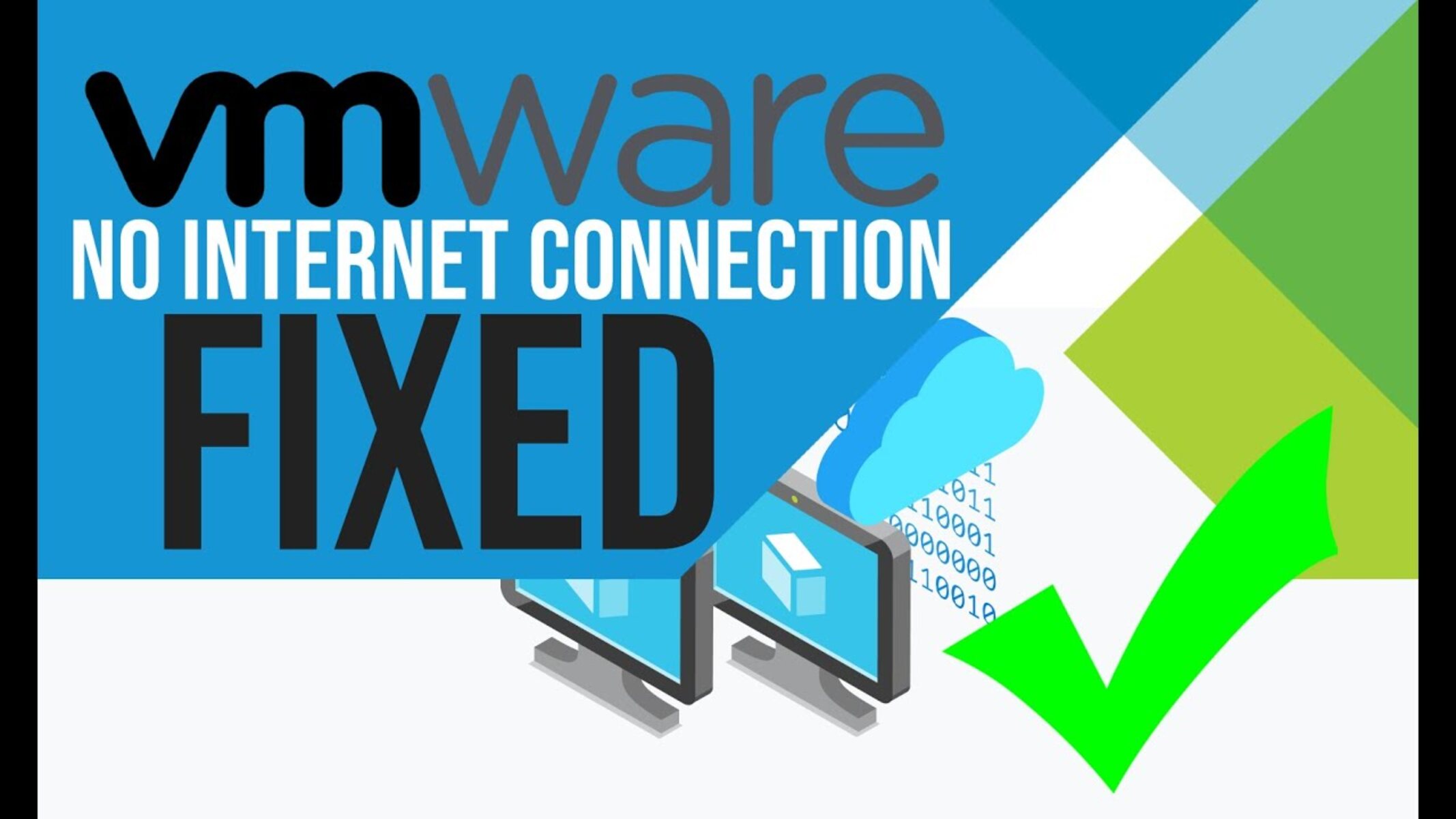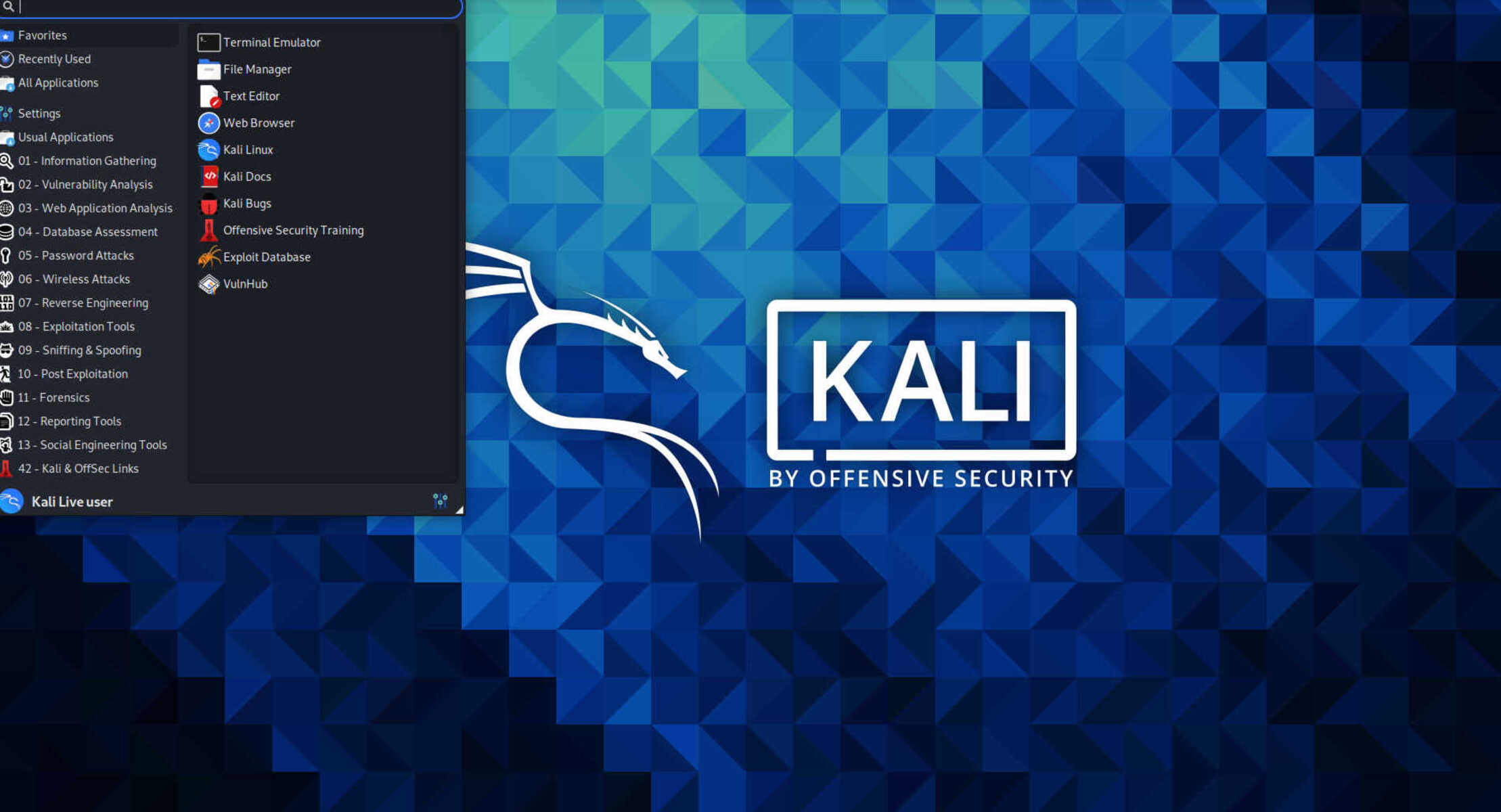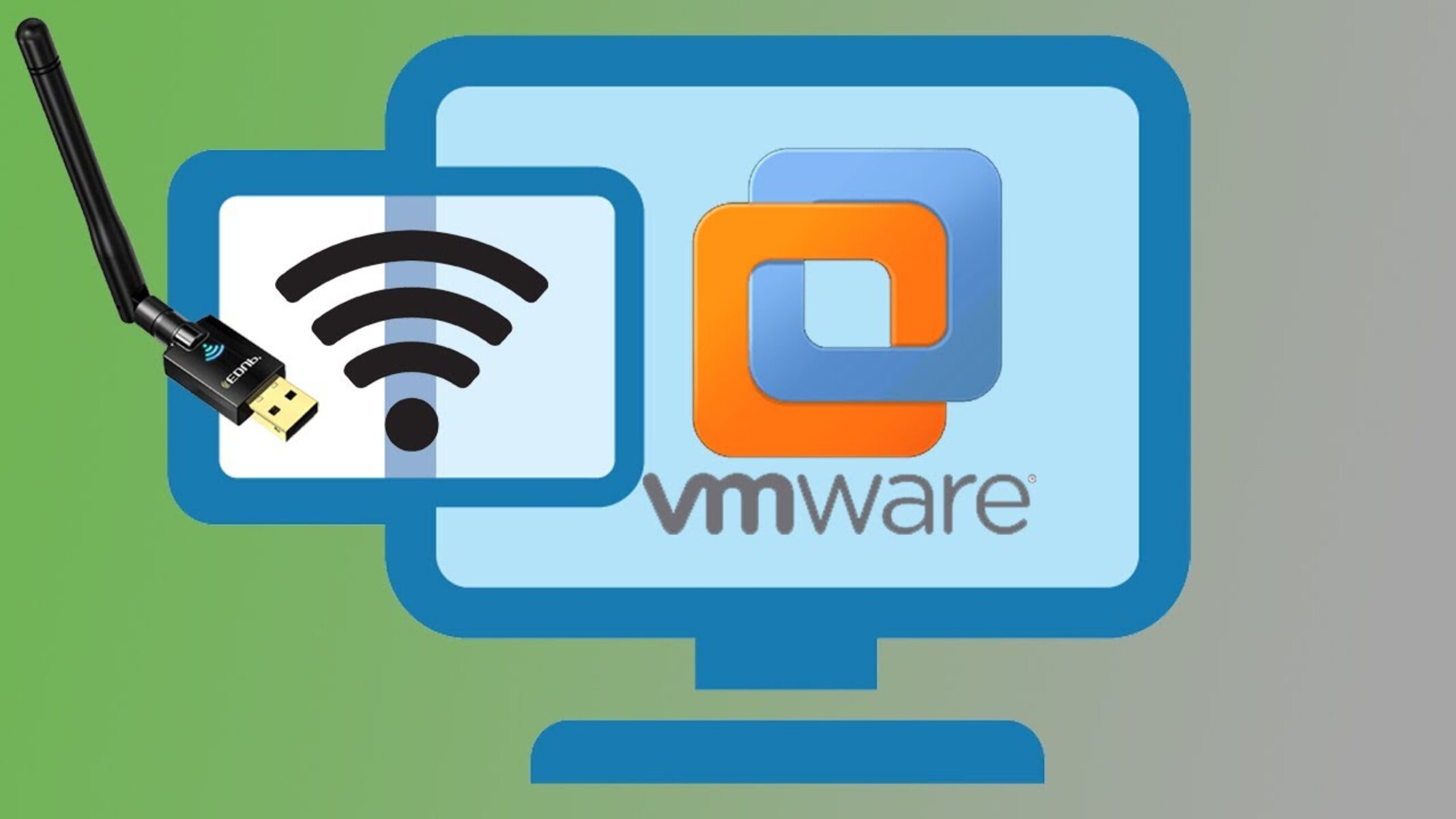Possible reasons why you can’t connect to the internet in VMware Workstation
VMware Workstation is a powerful tool for creating and running virtual machines on your computer. However, sometimes you may encounter connection issues and find yourself unable to connect to the internet within VMware Workstation. There could be several reasons for this problem, but here are some common ones to consider:
- Network adapter settings: Your virtual machine may not be configured with the correct network adapter settings. It’s possible that the network adapter is set to “Disconnected” or that the network connection is disabled within the virtual machine.
- Host computer’s internet connection: Sometimes, the issue may not lie within VMware Workstation but rather with your host computer’s internet connection. It’s important to ensure that your host computer is connected to the internet and functioning properly.
- Virtual network adapter settings: VMware Workstation provides different network adapter options to connect your virtual machine to the network. If the virtual network adapter settings are not configured correctly, it can lead to connectivity problems.
- Virtual machine’s network settings: Within the virtual machine itself, there may be misconfigurations in the network settings. This could include incorrect IP address settings, DNS server settings, or gateway settings.
- NAT settings: VMware Workstation offers Network Address Translation (NAT) settings that allow your virtual machine to share the host computer’s IP address. If the NAT settings are not properly configured, it can prevent internet connectivity.
- Firewall settings: Firewalls on either the host computer or the virtual machine can sometimes block network connections. It’s essential to review and adjust your firewall settings to allow for network access.
- Outdated VMware Tools: VMware Tools is a set of utilities that enhances the performance and functionality of the virtual machine. Outdated or incompatible versions of VMware Tools can cause issues with internet connectivity.
These are just some of the possible reasons why you may be unable to connect to the internet in VMware Workstation. In the following sections, we will explore how to troubleshoot and resolve these issues to restore internet connectivity within VMware Workstation.
How to troubleshoot network connection issues in VMware Workstation
If you’re experiencing network connection issues in VMware Workstation, don’t fret. There are several troubleshooting steps you can take to diagnose and resolve the problem. Follow these steps to get your internet connection up and running:
- Check network adapter settings: Start by verifying the network adapter settings within VMware Workstation. Make sure that the network connection is enabled and set to the appropriate adapter type (e.g., bridged, NAT, or host-only). If the network connection is disabled, enable it and try connecting to the internet again.
- Verify host computer’s internet connection: Ensure that your host computer is connected to the internet and working properly. Open a web browser or use other network-dependent applications on your host computer to confirm connectivity. If there are any issues with the host’s internet connection, resolve them first before troubleshooting within VMware Workstation.
- Tweak virtual network adapter settings: If the network adapter settings seem correct, but you’re still experiencing connection issues, try adjusting the virtual network adapter settings within VMware Workstation. You can try changing the adapter type, disabling and re-enabling the adapter, or even removing and reinstalling it.
- Double-check virtual machine’s network settings: It’s possible that the network settings within the virtual machine itself need attention. Ensure that the virtual machine has the correct IP address configuration, including the subnet mask and gateway. You might also consider checking the DNS server settings and adjusting them if necessary.
- Configure NAT settings: If you’re using the NAT network type in VMware Workstation, make sure the NAT network settings are properly configured. Check that the NAT service is running, and review the network settings to ensure they match your requirements. Restarting the virtual machine after making changes can also help.
- Review firewall settings: Examine the firewall settings on both the host computer and the virtual machine. Temporarily disable the firewalls on both sides to check if they are causing any connection issues. If disabling the firewalls resolves the problem, adjust the settings to allow the necessary network connections for VMware Workstation.
- Update VMware Tools: Outdated or incompatible versions of VMware Tools can interfere with network connectivity. Make sure you have the latest version of VMware Tools installed on your virtual machine. Upgrading or reinstalling VMware Tools can often resolve internet connection issues.
By following these troubleshooting steps, you should be able to identify and resolve the network connection issues in VMware Workstation. Continue to the next sections for further guidance on specific settings and configurations to ensure a successful internet connection within your virtual machines.
Checking your network adapter settings in VMware Workstation
When troubleshooting network connection issues in VMware Workstation, it’s crucial to start by examining the network adapter settings. Follow these steps to ensure the correct configuration:
- Open VMware Workstation: Launch VMware Workstation on your host computer.
- Select the virtual machine: Choose the virtual machine that is experiencing the network connection problem from the list of available virtual machines.
- Go to “Edit virtual machine settings”: Click on the “Edit virtual machine settings” option to access the settings for the selected virtual machine.
- Navigate to the “Hardware” tab: Within the virtual machine settings, go to the “Hardware” tab.
- Select “Network Adapter”: From the list of hardware devices, select the “Network Adapter” option.
- Check the network adapter settings: Review the settings displayed for the network adapter. Ensure that the network connection is enabled and set to the appropriate adapter type (e.g., bridged, NAT, or host-only).
- Adjust the network adapter settings if necessary: If the network adapter is disabled, enable it. If the adapter type is incorrect, change it to the appropriate type. You can also try removing the network adapter and adding it again.
- Save the settings: Once you have made any necessary changes to the network adapter settings, click on the “OK” or “Apply” button to save the settings for the virtual machine.
Checking and adjusting the network adapter settings within VMware Workstation ensures that the virtual machine is correctly configured to connect to the network. Remember to verify that the network adapter is enabled and set to the appropriate type. You may need to experiment with different adapter types to find the one that works best for your network environment.
If you’re still experiencing connectivity issues after verifying the network adapter settings, proceed to the next troubleshooting steps to diagnose and resolve the issue further.
Ensuring that your host computer’s internet connection is working properly
When troubleshooting network connection issues in VMware Workstation, it’s essential to verify that your host computer’s internet connection is functioning correctly. Here are a few steps you can take to ensure your host computer’s internet connection is working as expected:
- Check physical connections: Ensure that all physical connections between your host computer and the network are secure. Make sure Ethernet cables are properly connected, and there are no loose connections or damaged cables.
- Restart your router or modem: Sometimes, restarting your router or modem can resolve temporary network issues. Power off the router or modem, wait a few seconds, and then power it back on. Allow time for it to reconnect to the internet.
- Test your internet connection: Open a web browser on your host computer and try accessing a website to confirm if your internet connection is working. If the webpage does not load, you may have an issue with your internet service provider or your network settings.
- Disable VPN or proxy: If you are using a VPN (Virtual Private Network) or a proxy server, try disabling them temporarily. Some VPN or proxy configurations can interfere with your host computer’s internet connection and, subsequently, affect VMware Workstation.
- Check firewall settings: Verify that your firewall settings are not blocking internet connections. Temporarily disable your firewall and test your internet connection. If the problem persists, ensure that the necessary ports and protocols are allowed through the firewall.
- Scan for malware or viruses: Run a full scan on your host computer using antivirus or anti-malware software. Malware or viruses can potentially disrupt your internet connection. If any threats are detected, take appropriate action to remove them.
- Contact your internet service provider: If all else fails, reach out to your internet service provider (ISP) to verify if there are any known issues in your area or any specific settings required to ensure internet connectivity.
By following these steps, you can confirm whether your host computer’s internet connection is working properly. It is important to resolve any issues with your host computer’s internet connection before proceeding with further troubleshooting within VMware Workstation.
If your host computer’s internet connection is functioning correctly, proceed to the next sections to troubleshoot specific settings within VMware Workstation to restore internet connectivity to your virtual machines.
Troubleshooting virtual network adapter settings in VMware Workstation
If you’re experiencing network connection issues in VMware Workstation, the problem may lie in the virtual network adapter settings. Here are some steps you can take to troubleshoot and resolve issues related to the virtual network adapter:
- Check the virtual machine settings: Open VMware Workstation and select the virtual machine that is experiencing the network problem. Go to “Edit virtual machine settings” and navigate to the “Hardware” tab. Ensure that the virtual network adapter is present and enabled.
- Verify the adapter type: Depending on your network setup and requirements, choose the appropriate adapter type for the virtual network adapter. Options include “Bridged,” “NAT,” and “Host-only.” Make sure the chosen type matches your network configuration.
- Restart the virtual machine: Sometimes, a simple restart of the virtual machine can resolve network adapter issues. Shut down the virtual machine, wait a few seconds, and start it again.
- Remove and re-add the network adapter: In some cases, removing the network adapter from the virtual machine settings and adding it back can resolve connectivity problems. Edit the virtual machine settings, remove the network adapter, save the changes, and then re-add the network adapter.
- Update the virtual network adapter driver: If you’re using a specific driver for the virtual network adapter, check for updates. Visit the manufacturer’s website or the VMware Workstation documentation to find the latest version of the required driver. Download and install it on your host computer.
- Check for conflicts with other network adapters: If you have multiple network adapters installed on your host computer, ensure that there are no conflicts. Disable unnecessary adapters or configure them to coexist peacefully with the virtual network adapter used in VMware Workstation.
- Bypass network power-saving features: Some host computers have power-saving features that can affect the virtual network adapter. Disable power-saving features for the network adapter in the host computer’s device settings to ensure reliable network connectivity in VMware Workstation.
- Consult VMware Workstation documentation: If you’re unsure about the virtual network adapter settings, refer to the official VMware Workstation documentation. It provides detailed information and troubleshooting strategies specific to resolving network adapter issues.
By following these troubleshooting steps, you can address virtual network adapter settings within VMware Workstation. Remember to check the virtual machine settings, verify the adapter type, restart the virtual machine if necessary, and update the network adapter driver. Ensure compatibility and resolve any conflicts with other network adapters on your host computer.
If you’re still facing network connection issues, proceed to the next sections to explore further troubleshooting options for resolving internet connectivity problems in VMware Workstation.
Verifying the virtual machine’s network settings in VMware Workstation
If you’re experiencing network connection issues in VMware Workstation, one important area to check is the network settings within the virtual machine itself. Here are the steps to verify and adjust the virtual machine’s network settings:
- Open VMware Workstation: Launch VMware Workstation and select the virtual machine that is facing network problems.
- Power on the virtual machine: Start the virtual machine if it is not already powered on.
- Go to the virtual machine’s console: Click on the virtual machine’s console to access the virtual machine’s desktop.
- Open the network settings: Depending on the operating system running in your virtual machine, follow the appropriate steps to access the network settings. Typically, these can be found in the control panel or network settings section of the operating system.
- Check the IP address configuration: Verify that the virtual machine has the correct IP address configuration, including the subnet mask and gateway. Ensure that the IP address is in the appropriate range for your network.
- Review the DNS server settings: Confirm that the virtual machine is using the correct DNS server settings. If necessary, update the DNS server addresses to reliable and functioning DNS servers.
- Ensure the network is enabled: Double-check that the network interface within the virtual machine is enabled. If it is disabled, enable it and save the changes.
- Restart the virtual machine: Sometimes, a simple restart of the virtual machine can resolve network configuration issues. Restart the virtual machine and check if the network connectivity is restored.
- Test network connectivity: Open a web browser or use network-dependent applications within the virtual machine to test if the network connectivity has been successfully restored.
Verifying and adjusting the network settings within the virtual machine is crucial to ensure that it is correctly configured to connect to the network. Confirm the IP address configuration, review DNS server settings, and ensure the network interface is enabled. Restart the virtual machine and test the network connectivity.
If you’re still encountering network connection issues, continue to the next sections for further troubleshooting steps aimed at resolving internet connectivity problems within VMware Workstation.
Configuring NAT (Network Address Translation) settings in VMware Workstation
If you’re using Network Address Translation (NAT) network type in VMware Workstation and experiencing network connection issues, it’s important to check and configure the NAT settings. Follow these steps to configure the NAT settings in VMware Workstation:
- Open VMware Workstation: Launch VMware Workstation on your host computer.
- Select the virtual machine: Choose the virtual machine in which you want to configure the NAT settings.
- Go to “Edit virtual machine settings”: Click on the “Edit virtual machine settings” option to access the settings for the selected virtual machine.
- Navigate to the “Network Adapter” section: Within the virtual machine settings, go to the “Network Adapter” section.
- Choose “NAT” as the network type: Select the “NAT” option from the network type dropdown menu.
- Click on the “NAT Settings” button: Next to the network type dropdown, there should be a “NAT Settings” button. Click on it to access the NAT settings.
- Configure the NAT settings: In the NAT Settings dialog box, you can configure various options such as the port forwarding rules, the DHCP server settings, and the NAT service settings. Adjust these settings as per your network requirements.
- Save the settings: Once you have configured the NAT settings, click on the “OK” or “Apply” button to save the settings for the virtual machine.
- Restart the virtual machine: Restart the virtual machine to apply the new NAT settings.
Configuring the NAT settings in VMware Workstation allows your virtual machine to share the host computer’s IP address. Ensure that the port forwarding rules are set up correctly if you need to access specific services in the virtual machine from the host or external networks. Review the DHCP server settings and adjust them if required.
By correctly configuring the NAT settings, you can establish a reliable network connection within the virtual machine using the NAT network type in VMware Workstation.
If you’re still encountering network connection issues, proceed to the next sections to explore further troubleshooting steps for resolving internet connectivity problems in VMware Workstation.
Checking your firewall settings in VMware Workstation
When troubleshooting network connection issues in VMware Workstation, it’s important to examine your firewall settings to ensure they are not blocking network connections. Here are some steps to check and adjust your firewall settings:
- Review host computer’s firewall settings: Open the firewall settings on your host computer. This can usually be done through the Control Panel or the Security settings. You may have a third-party firewall software or the built-in firewall of your operating system.
- Allow VMware Workstation through the firewall: Look for any rules or settings related to VMware Workstation or the respective virtual machine. Ensure that VMware Workstation and its network services have the necessary permissions to access the network. If there are no specific rules, you may need to create or modify firewall rules to allow network traffic from VMware Workstation.
- Temporarily disable the firewall: As a troubleshooting step, temporarily disable your firewall and check if the network connectivity is restored within VMware Workstation. If disabling the firewall resolves the issue, it indicates that the firewall settings are causing the problem. Remember to re-enable the firewall once the issue is resolved.
- Check the virtual machine’s firewall settings: If you have a firewall running within the virtual machine, review its settings as well. Ensure that the firewall is not blocking the network traffic required for VMware Workstation or the specific services you want to access.
- Adjust firewall settings for network profiles: Some firewalls have different profiles for different network locations, such as public, private, or domain networks. Verify that the appropriate firewall rules are set for the network profile you are using.
- Test network connectivity: After adjusting the firewall settings, test the network connectivity within VMware Workstation to confirm if the issue has been resolved. Open a web browser or use network-dependent applications to ensure a proper connection.
By checking and adjusting your firewall settings, you can ensure that VMware Workstation has the necessary permissions to establish network connections. Allow VMware Workstation and its network services through the firewall, temporarily disable the firewall for troubleshooting purposes if needed, and verify that the virtual machine’s firewall settings are not blocking network traffic.
If network connection issues persist, continue to the next sections for additional troubleshooting tips and techniques to resolve internet connectivity problems within VMware Workstation.
Updating VMware Tools to resolve internet connection issues
One potential solution to resolve internet connection issues in VMware Workstation is to update the VMware Tools installed in the virtual machine. VMware Tools is a set of utilities that enhance the performance and functionality of the virtual machine. Here’s how you can update VMware Tools:
- Power on the virtual machine: Start the virtual machine in which you want to update VMware Tools.
- Ensure VMware Tools are installed: Check if VMware Tools are already installed in the virtual machine. You can verify this by going to the “Manage” or “Tools” menu in the guest operating system of the virtual machine.
- Check for VMware Tools updates: Open the VMware Workstation application on the host computer. From the menu bar, go to “VM” and select “Upgrade VMware Tools.” This will check for available updates.
- Update VMware Tools: If an update is available, follow the on-screen prompts to install the latest version of VMware Tools. This may involve mounting an ISO image containing the update and running the installer within the virtual machine.
- Restart the virtual machine: After the update is complete, restart the virtual machine to ensure the changes take effect.
Updating VMware Tools can help resolve internet connection issues by ensuring that the virtual machine has the latest drivers and utilities necessary for network connectivity. The update may address compatibility issues or bugs that could be impacting the virtual machine’s ability to connect to the internet.
Once the update is complete and the virtual machine has restarted, test the network connection to confirm if the internet connection issues have been resolved within VMware Workstation.
If you’re still experiencing internet connection problems, continue to the next sections for additional troubleshooting techniques to restore connectivity within VMware Workstation.
Additional tips and tricks for troubleshooting internet connection problems in VMware Workstation
If you’re still facing internet connection problems in VMware Workstation, try these additional tips and tricks to further troubleshoot and resolve the issues:
- Restart VMware Workstation: Close VMware Workstation and restart the application. Sometimes, a simple restart can resolve temporary software glitches or conflicts.
- Update VMware Workstation: Ensure that you have the latest version of VMware Workstation installed on your host computer. Check for updates and install them if available. Updates often include bug fixes and improvements that can help resolve connectivity issues.
- Reset the virtual network: Within VMware Workstation, you can try resetting the virtual network to default settings. Go to “Edit” and select “Virtual Network Editor.” Click on the “Restore Defaults” button to reset the virtual network configuration.
- Disable and re-enable the virtual network adapter: In the virtual machine settings, disable the network adapter, save the changes, and then re-enable it. This can refresh the adapter settings and may resolve connectivity problems.
- Use a different network adapter type: Experiment with different network adapter types (e.g., bridged, NAT, or host-only) to see if one provides better connectivity. Some adapter types may be more compatible with your network environment.
- Check for network-related software conflicts: Some third-party software or network management tools on your host computer may conflict with VMware Workstation. Temporarily disable or uninstall such software to determine if they are causing the connection issues.
- Run VMware Workstation as an administrator: Right-click on the VMware Workstation shortcut and select “Run as administrator.” This can provide the application with the necessary permissions to function correctly and access network resources.
- Reinstall VMware Tools: If updating VMware Tools did not resolve the issue, consider uninstalling and reinstalling VMware Tools in the virtual machine. Sometimes, a fresh installation can fix persistent internet connection problems.
- Seek help from the VMware community: If all else fails, reach out to the VMware community for support. Participate in forums, ask questions, and seek guidance from experienced users who may have encountered and resolved similar internet connection issues in VMware Workstation.
By implementing these additional tips and tricks, you can further troubleshoot and resolve internet connection problems within VMware Workstation. Restart the application, update VMware Workstation, reset the virtual network, and experiment with different network adapter types. Disable conflicting software, run VMware Workstation as an administrator, and seek assistance from the VMware community if needed.
Remember to document any changes you make and restore previous settings if they do not resolve the issue. With persistence and the right troubleshooting techniques, you can overcome internet connection problems and enjoy seamless network connectivity within your virtual machines in VMware Workstation.

























